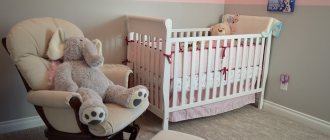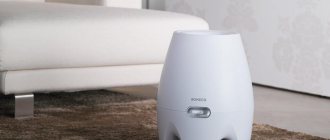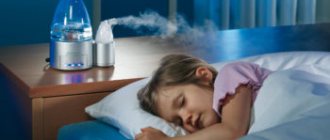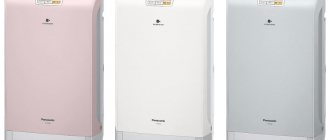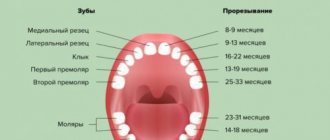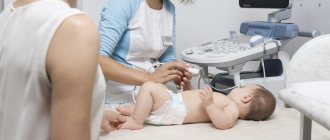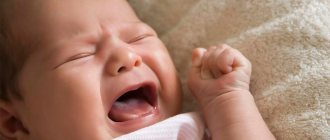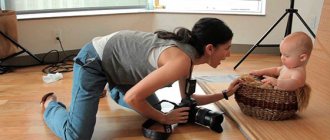Why is it important to maintain temperature conditions?
It would seem, why complicate things? Adults adapt to the current temperature, and the baby will get used to it. If it’s hot, let’s ventilate, if it’s cold, put on something warm. But when it comes to a newborn, difficulties arise that young parents may simply not be aware of.
Adults rely on their feelings. But not only is their perception of temperature subjective in itself - someone walks around in shorts and a T-shirt with the first warm rays, and someone does not take off their jacket and hat until June - but in newborns it works completely differently.
Babies are not able to adapt to temperature changes as easily as adults. The mechanisms of thermoregulation in the body of a newborn child are not fully formed. If an adult is cold, he may actively move to warm up, or simply shiver. Trembling is the body's defense. In this way, it produces heat before the person even realizes how cold he is. In newborns, this protective mechanism does not yet work.
It is important!
Children in the first months of life freeze faster than adults.
Against the background of hypothermia, the body is less able to resist infection, and the child may catch a cold. Children also overheat faster, and overheating is even more dangerous for newborns. They sweat slightly, so they cannot cool down in this way, unlike adults. When freezing, the child at least begins to actively move his arms and legs - an adult is more likely to respond to his concern, but the baby cannot resist overheating. The mother may notice that something is wrong when overheating will already lead to obvious malfunctions in the baby’s body: a sharp rise in temperature, dehydration, and breathing problems. In severe cases, overheating can cause irreversible damage to the nervous system.
To prevent this from happening, you cannot take the temperature in your baby’s room lightly.
Causes of high or low air humidity
Deviations from the norm of indoor humidity are harmful to humans and pets. On top of that, household items, furniture and food may be damaged.
Low humidity
The human respiratory system filters and warms the air. The main barrier to respiratory infections is the nasal mucosa. When there is a lack of moisture, they dry out. The person is forced to breathe through the mouth, resulting in apnea. In addition, when breathing through the mouth, less oxygen enters the lungs.
In dry air, a lot of dust, lint and harmful fragments appear, which settle on the mucous membranes. An important protective function of the body is reduced.
Excessive evaporation of tear fluid from the surface of the cornea occurs. The eyes become inflamed and red. Because of this, performance decreases and concentration decreases.
The skin also suffers from lack of moisture. Microcracks form on it, into which dirt and bacteria enter. Itching and inflammation occurs. Dry skin becomes more sensitive and the risk of allergic reactions increases.
Low humidity promotes the accumulation of static electricity, which is dangerous for electronics. Moisture deficiency has a bad effect on wooden furniture, parquet floors, musical instruments, paintings and books. The wood dries out and cracks, the paint peels off, the paper crumbles, and the floor begins to creak.
When humidity is low, the following complications arise:
- frequent respiratory diseases;
- mucus accumulation;
- cough;
- sore throat;
- exacerbation of asthma, adenoids, laryngitis;
- allergic reactions;
- snore;
- fatigue;
- red, inflamed eyes;
- itching and skin irritation;
- eczema;
- premature appearance of wrinkles;
- dryness and peeling of lips;
- feeling of skin tightness;
- brittle hair and nails.
It is necessary to take into account factors influencing the dryness of the microclimate. This will allow you to achieve optimal air humidity in the apartment.
In air conditioners, air masses circulate along a closed path. Consequently, the air is not renewed and dries out. Plastic windows do not allow oxygen to pass through well, so it is necessary to ventilate the apartment more often to compensate for the lack of air exchange.
The complication is that ventilation in winter does not increase the humidity in the room. Cold air from outside requires less water to saturate than warm air. But when it enters a heated room, its moisture content remains the same. Therefore, ventilation makes the air drier. Forced supply ventilation lowers relative humidity for the same reasons. Heating devices and operating equipment heat up the room, and the temperature difference becomes even greater.
High humidity
The negative impact of high humidity on humans does not depend on the season.
Thus, in summer, at high temperatures, the body is insufficiently cooled. Sweating is not impaired, but moisture does not evaporate well from the surface of the skin. A person's pulse quickens and blood pressure rises. The body continues to produce sweat in an effort to avoid overheating, and along with it, it loses a lot of salts and important chemical compounds. This is why heat is more easily tolerated in dry climates.
Cardiovascular diseases
In winter, a person freezes, since water has a high heat capacity and heat transfer to air increases. Immunity decreases. Pulmonary and cardiovascular diseases are worsening.
In addition, fungi and bacteria multiply in dampness. Mold releases spores and toxins that cause allergies, asthma, decreased immunity and symptoms of intoxication.
Complications caused by high indoor humidity:
- cough
- runny nose and rhinitis
- migraine
- allergic reactions
- eczema
- asthma
- pulmonary diseases
- hypertension
The main reason for an increase in humidity in an apartment from the norm is poor ventilation or thermal insulation of the room, or the presence of leaks and flooding.
What temperature should be in the children's room?
It is important!
According to WHO recommendations, the temperature in a newborn's room should be 18-21 degrees.
Most mothers will find this temperature too cool, but it is comfortable for the baby.
An increase is allowed up to 22 degrees. In hotter conditions, the baby is at risk of overheating.
How to create the optimal temperature
- To create the optimal temperature, first find out what it is like in the room. The easiest way is to hang a thermometer near your baby's crib, then you will know the temperature for sure. But if there is no thermometer, touch the back of the child’s neck - if it is wet and hot, the child is hot, dry and cold - it is cold. In addition, signs of overheating are the baby’s reddened face, wet hair, rapid heavy breathing, and lethargy. When a child is cold, he will worry, cry, and his skin may become pale or bluish.
- If the room is cold, warm your baby. The fastest way to do this is to simply hold him close to you. The child will warm up from your body. Put him on a warm slip, socks, or put him in an insulated envelope. You cannot cover your baby in a crib with a regular blanket - there is a high risk of suffocation if he moves awkwardly and the edge of the blanket slides down onto his face. If the room is constantly cool, for example due to heating problems, purchase a heater. The main thing is not to place it next to the crib when the baby is there.
- If the room is hot, leave the baby with a minimum of clothing: a sleeveless bodysuit or a light vest. If possible, leave your baby out of a diaper for as long as possible.
Ventilate the room regularly. If it's cold outside, cover your newborn's crib with a thick diaper for ventilation or take him out of the room. Place windows to ventilate when you go for a walk. If the apartment is constantly too hot, it would be advisable to install air conditioning before the baby is born. The air flow, again, should not be directed towards the crib.
So, if the room temperature is comfortable for the baby, his skin will be warm, dry, of normal color, and his breathing will be even. He will sleep soundly and be active during periods of wakefulness.
Let's sum it up
- Overheating and hypothermia are dangerous for a newborn, and overheating occurs faster and is more difficult to notice.
- The optimal temperature in a children's room is 18-21 degrees. An increase to 22 degrees during the day is acceptable.
- Hang a room thermometer near your baby's crib. Dress your child according to the room temperature. Ventilate the room regularly. If necessary, install a heater or air conditioner.
(0 ratings; article rating 0)
Share Share Share
Methods for determining air humidity in an apartment
Humidity is measured with a hygrometer. There are mechanical and electronic models.
The indoor mechanical device is inexpensive and easy to operate.
Electronic hygrometer
There are measurement errors, but high accuracy is not required for home use. The main condition: there should be no sudden changes in humidity in the room. In addition, the arrow moves slowly, and the data is displayed with a noticeable delay.
Electronic hygrometers have more accurate results, but they are also more expensive. Compared to mechanical ones, they show the current humidity with a slight delay of 5 to 60 seconds.
When choosing, you should pay attention to the required measurement ranges. So, a household hair or condensation hygrometer is quite suitable for rooms, but in a sauna it will not be able to show the actual relative humidity
Modern hygrometers are often produced in combination with thermocouples, clocks, thermometers, barometers and even baby monitors. In addition, the arsenal of electronic models includes various functions of sound notification, light display and alarm, and data storage.
There are several ways to determine humidity without a hygrometer.
- Cool a glass of water to 3-5⁰ C. Place it in the middle of the room and watch for condensation. The air is too dry if the steam on the walls dries out in the first 10 minutes. If moisture collects in drops or flows down the walls, the humidity is increased. The walls are fogged up, but they do not form drops, and the condensation does not evaporate instantly - all this indicates that the air humidity in the apartment is normal.
- You can tell about the imbalance by looking at regular salt. If the salt is heavy and wet, the air is oversaturated with vapor. If it is compacted into a dense lump, the climate is too dry.
- It is necessary to record the current data of the thermometer, and then wrap it with a damp cloth. After a few minutes, take readings. Determine the difference between the first and second results. Using the information obtained and Asman's table, you can find out the relative humidity in the room.
- The spruce cone opens at low humidity. When increased, it presses the scales tightly.
